The Tuy An Lighthouse, En Cave Waterfall, and Moc Chau Tea Hill shine under the night sky in photos by Vietnamese authors participating in the international photo contest 35AWARDS.
The annual international photo contest 35AWARDS was first organized in 2015 by a team of professional photographers from around the world. The 2021 edition included various categories, including Milky Way photography. This category attracted 1,622 authors with 3,623 photos submitted, and the results have just been announced, with Vietnam securing one photo in the top 10 and 15 photos in the top 200. The images in the top rankings will be accumulated for the final judging of the year.
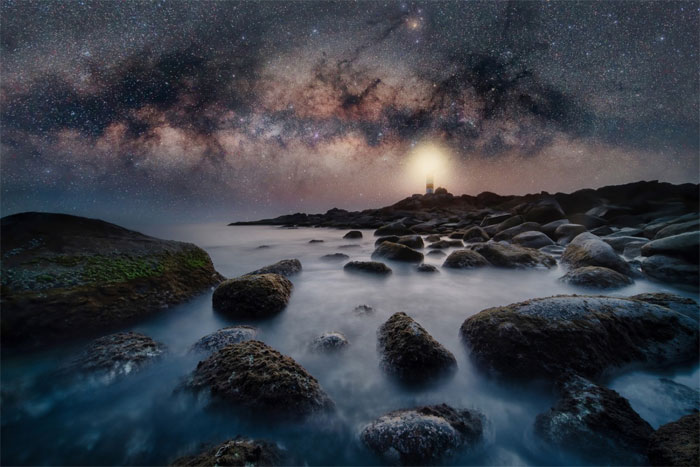
The image above showcases the night at Tuy An Lighthouse, Phu Yen by Bui Xuan Viet (Dong Nai), the only photo from Vietnam in the top 10 of the Milky Way category at 35AWARDS. The author shared that he brought a blanket from his hotel to the area around the Tuy An Lighthouse, choosing a dry rocky area to shoot while stargazing. Viet has had a passion for stargazing since childhood, remembering a faint light band stretching across the sky when there was less light pollution than today. It was later that he realized this faint light was the Milky Way. He spent over a year self-studying and capturing his first images, once standing in -10 degree Celsius weather on the Everest Base Camp trail in 2019 for over an hour just to get one perfect shot.
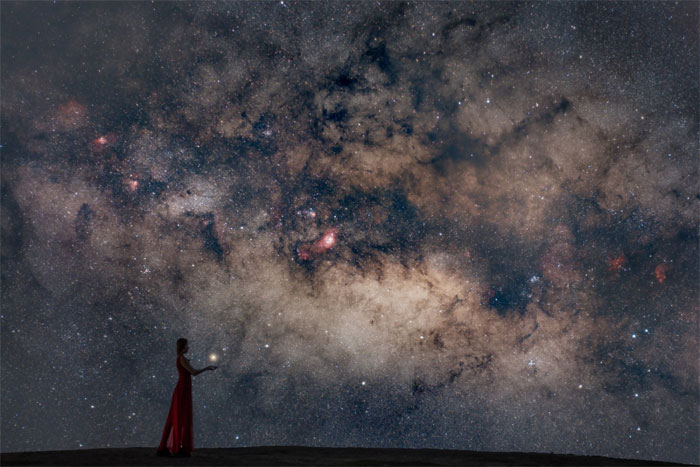
The idea for the photo “Touching Jupiter” by Bui Xuan Viet also came about by chance. During a trip to Da Lat in March 2020, he discovered that both Jupiter and the Milky Way would be within reach at the pink grass hill near the Trọc Hill. However, by the time the Milky Way and Jupiter rose high enough, dawn was approaching around 4:30 AM, making it difficult to capture a satisfactory shot. He returned a month later to shoot at the perfect moment when both appeared within reach at 3 AM. This photo made it to the top 200 impressive Milky Way images at 35AWARDS. In Vietnam, the Milky Way can be photographed from around February to November, on clear nights without moonlight, or when the moon has set, avoiding cloudy or rainy days. Traveling far from light pollution, it’s best to head to the outskirts of Da Lat or even farther to the northern mountains. The shooting technique requires long exposures of about 15-30 seconds to capture a beautiful image. Additionally, one must prepare everything from tents and flashlights to mosquito repellent, as the photo session can last all night.
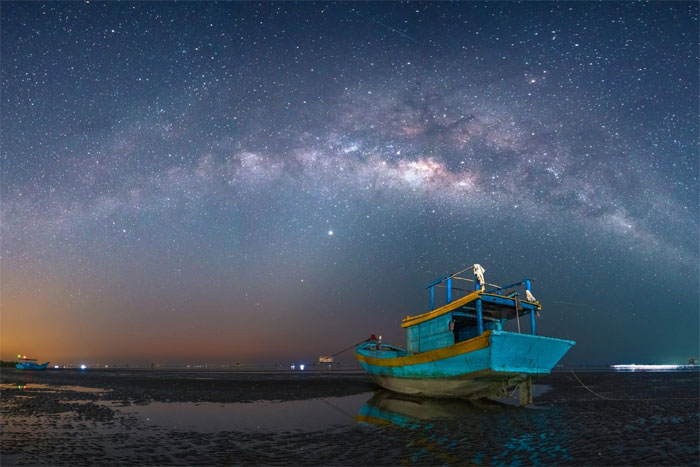
Tan Thanh Beach, Go Cong Dong, Tien Giang, located about 65 km from Ho Chi Minh City, is a favorite spot for capturing the Milky Way, with relatively low light pollution and diverse foregrounds. Photographer Phan Nhat Dang Thu (Ho Chi Minh City) shared that capturing the above photo was memorable; upon arrival at 4:30 AM, he had to rush to the shooting location, as any delay would result in heavy dawn light interference. He had to quickly cross a muddy area as the tide receded, sinking to his knees with swarms of mosquitoes buzzing around. Despite the time constraints and challenging movement, he managed to capture three quality shots, with a boat in the foreground and a beautiful moment as dawn approached.
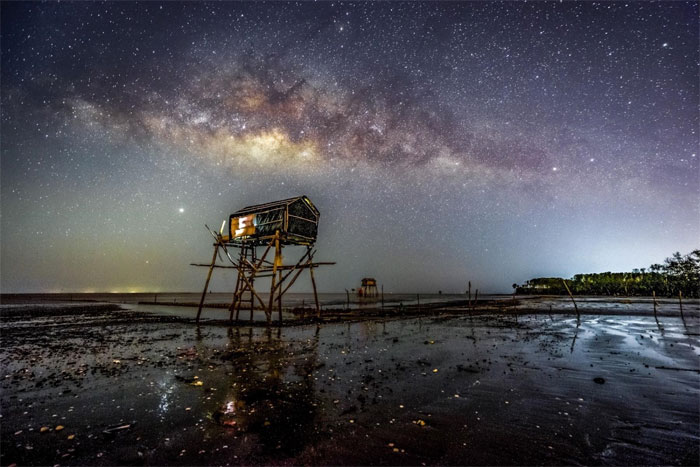
Meanwhile, photographer Chu Thien Son (Ho Chi Minh City) mentioned that his first experience shooting the Milky Way with friends was at Tan Thanh Beach, Tien Giang, with a foreground featuring a clam watching hut of local fishermen. Tan Thanh boasts long stretches of black sand, extending about 7 km. Visitors here should not miss out on fresh seafood like clams, crabs, or cockles. “I was quite inexperienced and excited about this type of photography, and my friends helped guide me a lot,” Son said.

Ke Ga, Ham Thuan Nam, Binh Thuan showcases the pristine beauty of blue seas, white sands, golden sunshine, and uniquely shaped stones that rise like a chicken’s head reaching toward the sea. This area is home to the Ke Ga Lighthouse on Ba Island, the most beautiful island in Binh Thuan. Ke Ga is not only “the best sunrise viewing spot in Vietnam” but also an ideal location for capturing the Milky Way. Son noted that he was able to take clear photos because he visited Ke Ga on a day when there were very few boats and no light interference from nearby dragon fruit farms.
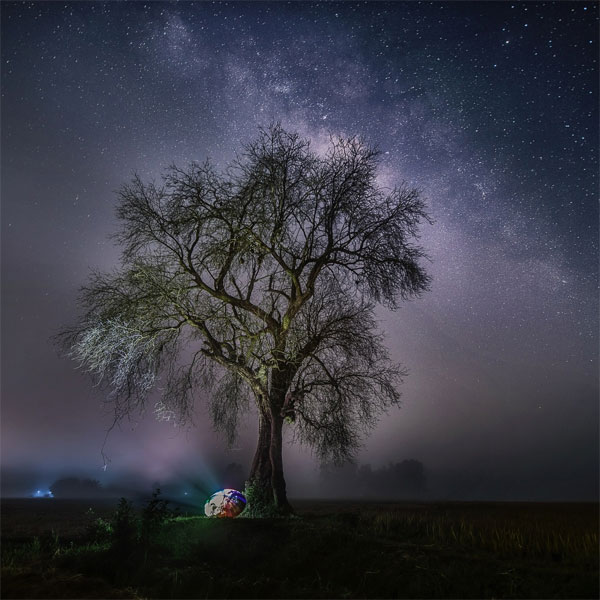
“The Lonely Prickly Pear Tree” at Go Duoi village, Long Thanh Nam commune, Hoa Thanh, Tay Ninh is a favorite check-in spot for tourists. Photographer Nguyen Tan Tuan (Ho Chi Minh City) shared that during a visit to his maternal grandparents in Tay Ninh, he set up a tent and stargazed with his son beside the lonely prickly pear tree, hoping to give his child an experience of nature under the starry sky.
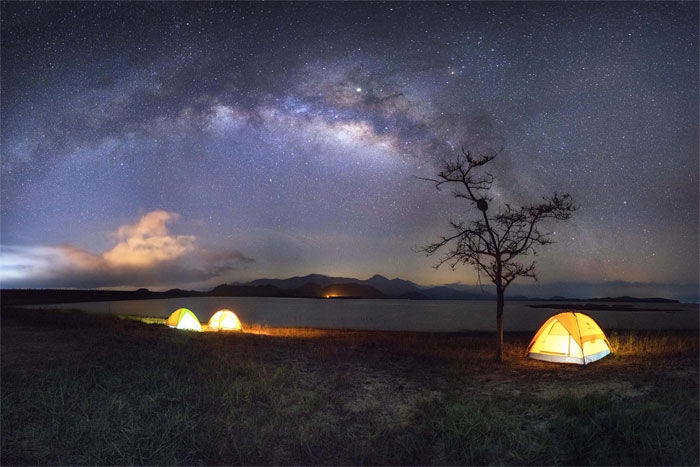
Young photographer Truong Hoai Vu (Phu Yen), a student at Ho Chi Minh City University of Technology, chose a hydroelectric lake as his shooting location, far from artificial light sources, away from Tuy Hoa city to capture the Milky Way. Vu used panoramic shooting techniques to encompass the scene, with a composition featuring a tree whose shape follows the curve of the Milky Way, highlighted by tents contrasting against the cold night sky. Vu also has another photo from the Night at the Tuy An Lighthouse, Phu Yen, which made it to the top 200 of 35AWARDS.
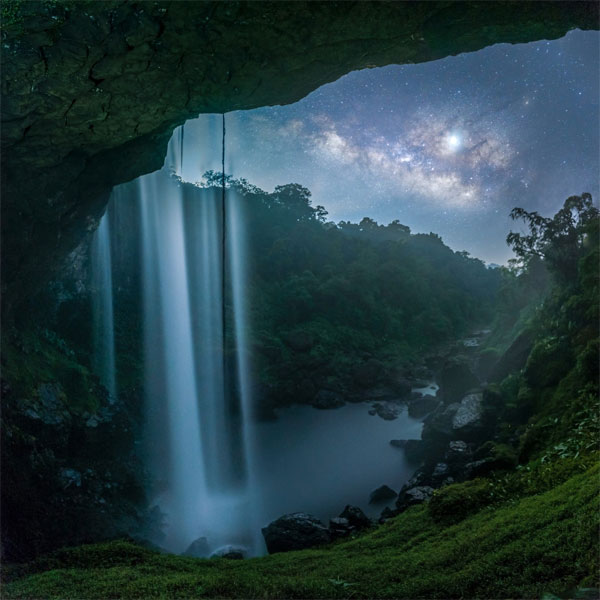
En Cave Waterfall (or K50 Waterfall) in the Kon Chư Răng Nature Reserve, K’Bang district, Gia Lai is one of the famous experiential tourism spots in Vietnam and a fantastic photography location for photographers. Nguyen Trong Doi, a lecturer at Quy Nhon University in Binh Dinh and a photography enthusiast, shared that to capture the Milky Way from En Cave Waterfall, one must not only conquer the waterfall but also understand the lunar cycle, monitor the weather, choose the right camera placement, and compose the shot. As night falls, once the timing for the Milky Way’s appearance is determined, one must enter the “cave waterfall” to shoot. The darkness makes movement difficult and slippery, and the mist from the waterfall poses significant obstacles, so having companions to assist is essential. “Only after leaving the cave waterfall and reviewing the results can one describe the indescribable emotions, with words of encouragement blending with the roaring sound of the waterfall. It was a memorable journey with teammates in conquering the Milky Way from the En Cave Waterfall,” Doi said.
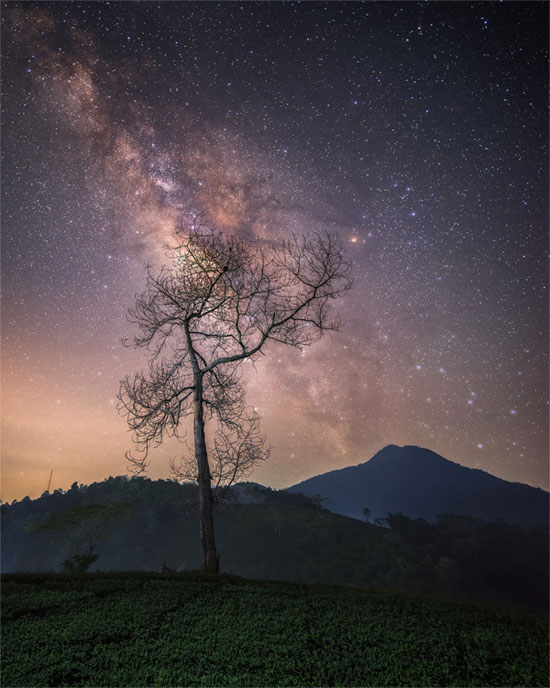
Meanwhile, young photographer Tran Van Linh (Hanoi) is an avid traveler who seeks the tranquility away from the city. Recently, he chose Long Coc Tea Hill, Phu Tho (photo) and the heart-shaped tea hill in Moc Chau, Son La for overnight camping and night sky photography.
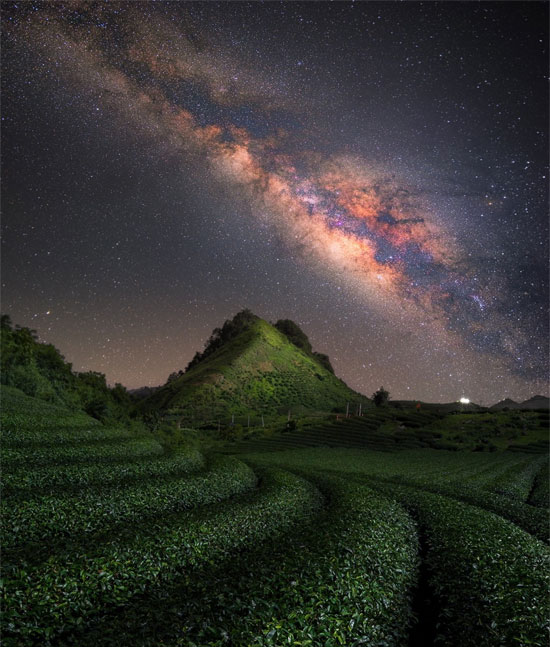
Tran Van Linh shared that both Long Coc and Moc Chau (photo) are quite familiar tourist spots, but most people only enjoy the sunrise and sunset, forgetting the beauty of the night. “In the evening after capturing the sunset, I scouted locations for shooting the Milky Way. In the cold night mist, looking at the stars stretching across the tea hills made me feel as if I were lying in the cosmos,” he said.
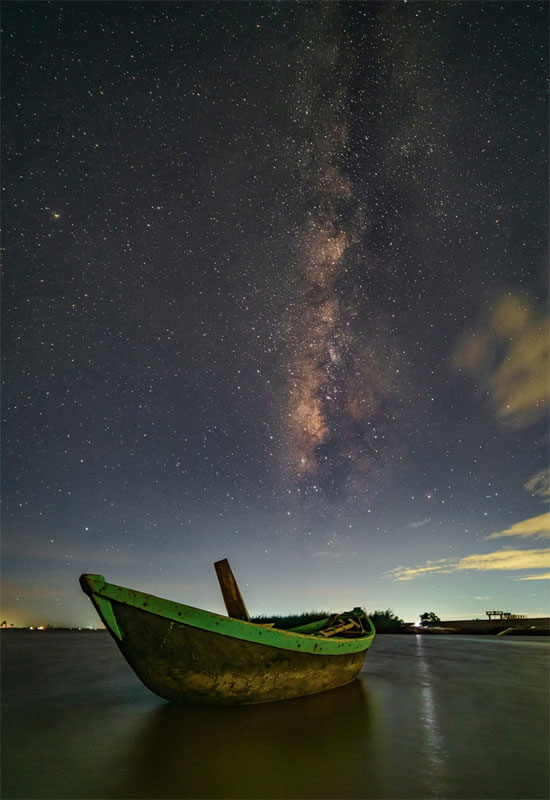
“I and my friends traveled nearly 200 km from Hanoi to Dong Chau Beach, Thai Binh. This is one of the few remaining pristine beaches in the North. We stayed up all night by the cold beach, under a sky as dark as a pot lid, and at one point even sank into some water-filled sand pits, nearly dropping our equipment into the muddy sand. But those moments were compensated by the joy of capturing the night sky,” said Tran Anh Tuan.
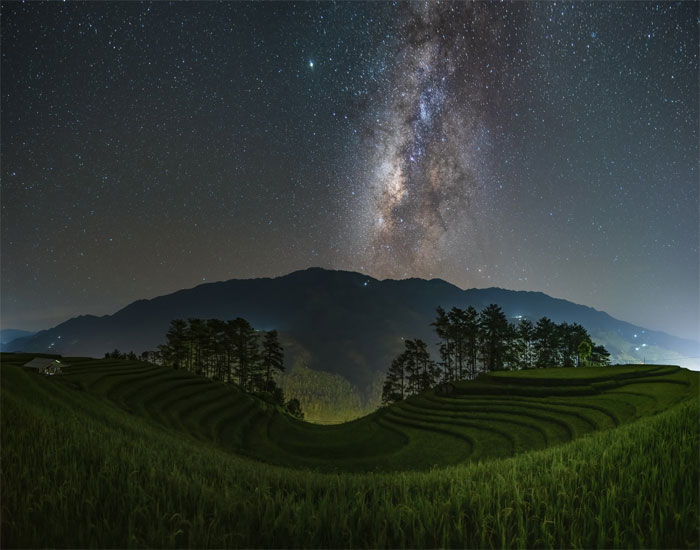
The photo of Sang Nhu Terraced Fields shining under the night sky was taken by young photographer Hoang Minh Hieu (Hanoi). Sang Nhu, located in Mu Cang Chai, Yen Bai, is one of the most beautiful terraced rice fields in the Northwest.


















































